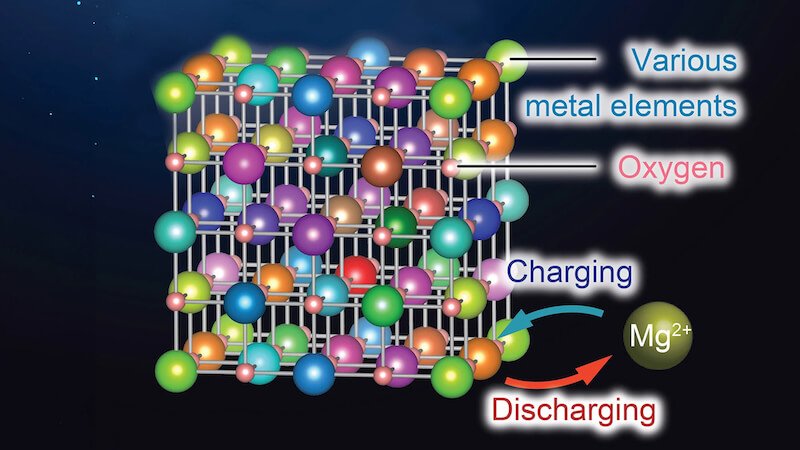
The magnesium battery could be a sustainable alternative to classic lithium-ion batteries in the future. Researchers recently made a breakthrough and developed a new cathode material.
Batteries are likely to continue to be an integral part of our everyday lives in the future. Energy storage drives the mobility transition and helps us store excess capacity from the power grids. In addition to lithium-ion batteries, researchers are currently evaluating several alternatives. Finally, the rare earths in such batteries are often a problem.
Researchers at Tohoku University in Japan recently made a breakthrough in battery technology. They developed a new cathode material for rechargeable magnesium batteries (RMBs). This material enables efficient charging and discharging processes, even at low temperatures. Until now, scientists have still faced challenges in developing a commercial battery.
Magnesium battery uses rock salt as a cathode
But by leveraging an improved rock salt structure and a high-entropy strategy, this material now overcomes previous challenges in magnesium diffusion and electron transport. By introducing a strategic mix of seven different metal elements, the team was able to create a crystal structure with abundant stable cation vacancies. This makes it easier to insert and remove magnesium particles.
The development marks the first use of rock salt oxide as a cathode material for RMBs. At the same time it brings a decisive advantage. The new battery could pave the way for a more cost-effective, safer and higher-capacity alternative to lithium-ion batteries.
Battery could also score points in the area of sustainability
The magnesium batteries also create an efficient and environmentally friendly energy storage solution for the future. The material works efficiently at a temperature of around 90 degrees Celsius. This represents a significant reduction in the required operating temperature. There is also the potential to develop even more innovative approaches.
The work could also lead to a variety of useful, unnatural polysaccharide polymers. The researchers need these for the battery and impress with even better sustainability. Finally, biomass and improved recyclability could keep the CO2 footprint small.
Also interesting:
Source: https://www.basicthinking.de/blog/2024/04/19/magnesiumbatterie/


